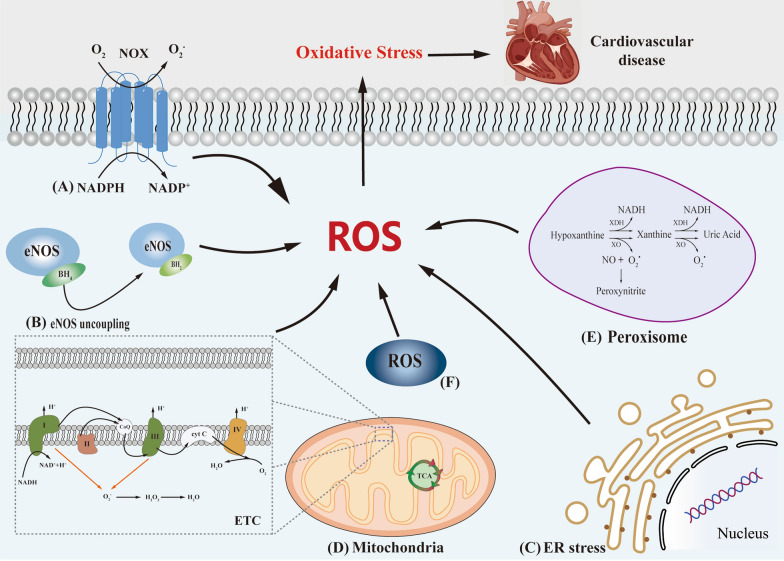Fig. 1.
The five pathways of ROS origin are briefly described. A NOXs catalyze the transfer of electrons from NADPH to the plasma membrane, and then reduction of O2 generates O2·−, O2·− as a precursor of ROS produced by cells. B Deficiency of BH4 leads to uncoupling of eNOS, which in turn causes reduced NO bioavailability. C After ER stress, both unfolded and misfolded proteins can lead to excessive production of ROS. D Complex I, II and III directly induce increased ROS expression in the mitochondrial respiratory chain causing mitochondrial dysfunction, Complex IV does not directly produce ROS in the mitochondrial respiratory chain but catalyzes electron transfer from Cyt c. E During the normal catalytic activity of peroxisomes, ROS is produced as a metabolic byproduct. F The concept of "ROS-induced ROS release" exists in ETC during ROS production, a process originally described as the production or release of ROS within an organelle that triggers enhanced ROS production or release by another compartment or organelle, and later described as extending to communication between mitochondria and plasma membrane-localized NOXs

